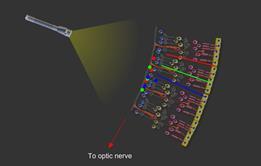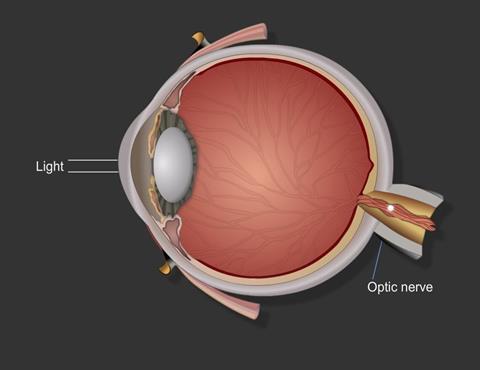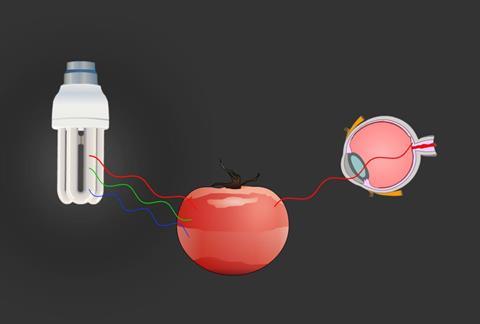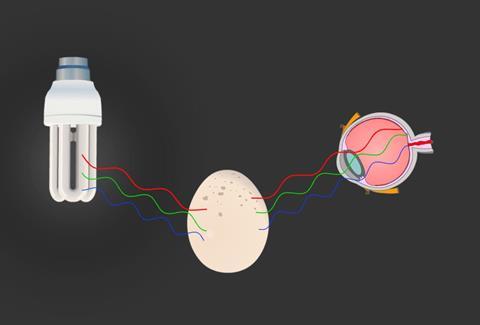Discover what colour is, and how our senses percieve it
The human eye and brain together translate light into colour. Light receptors within the eye transmit messages to the brain, which produces the familiar sensations of colour.
Newton stated that the surface of an object reflects some colours and absorbs all the others. We perceive only the reflected colours.
The surface of the red apple is reflecting the wavelengths we see as red and absorbing all the rest. An object appears white when it reflects all wavelengths, and it appears black when it absorbs all wavelengths.
Red, green and blue are the additive primary colours of the colour spectrum. Combining balanced amounts of red, green and blue lights also produces pure white. By varying the amount of red, green and blue light, all of the colours in the visible spectrum can be produced.
Considered to be part of the brain itself, the retina is covered by millions of light-sensitive cells, some shaped like rods and some like cones. These receptors process the light into nerve impulses and pass them along to the cortex of the brain via the optic nerve.
Downloads
The eye
Simulation | Flash, Size 17.8 kbWhy is the apple red?
Simulation | Flash, Size 9.05 kbWhy is the egg white?
Simulation | Flash, Size 8.77 kbRods and cones of the eye
Simulation | Flash, Size 28.87 kb
Ultraviolet–visible (UV-vis) spectroscopy

Learn how UV-visible radiation can be used to shed light on chemical identification and how our senses percept colour. From the theory behind molecular orbitals and electronic transitions to the application of this technique with relatable examples. Includes examples and interactive simulations to aid understanding.
 Currently
reading
Currently
reading
Introduction
- 2
- 3
- 4





























1 Reader's comment